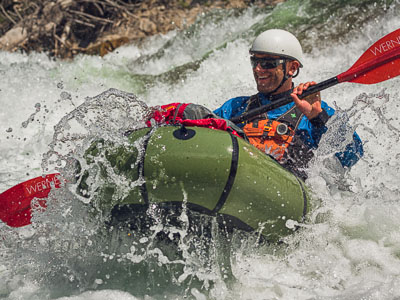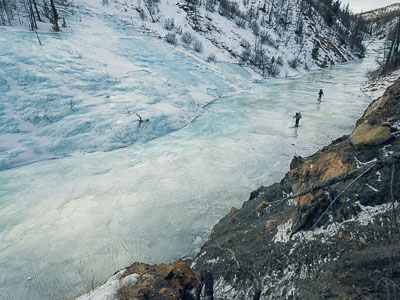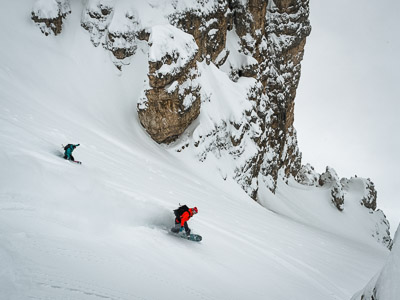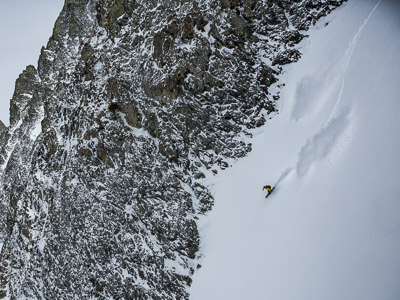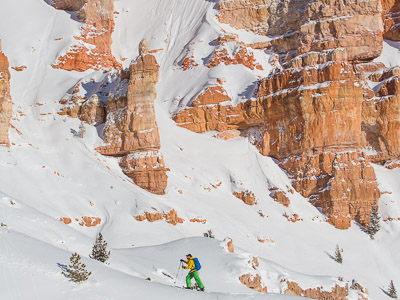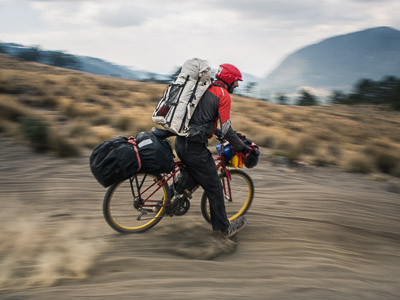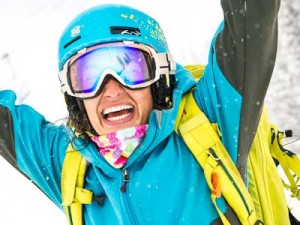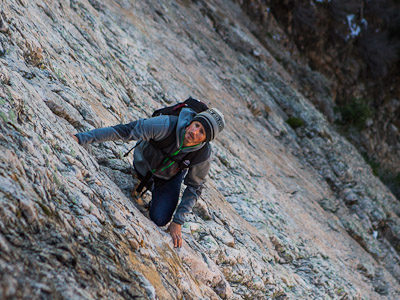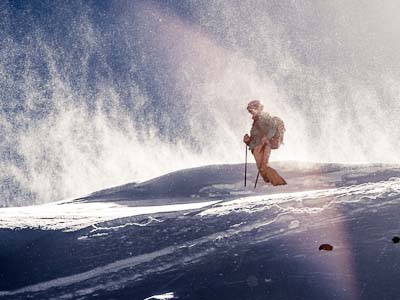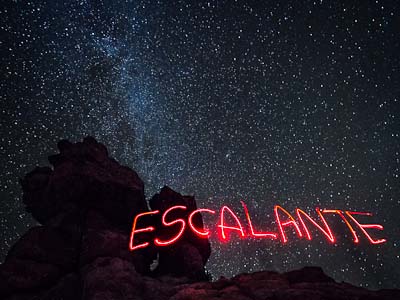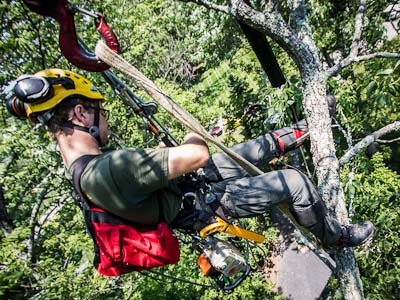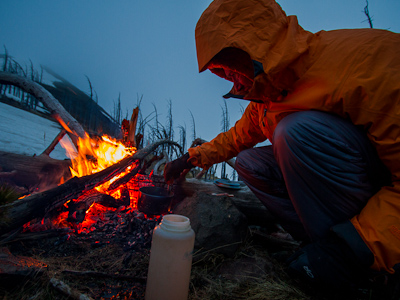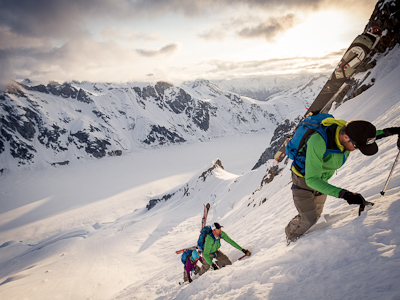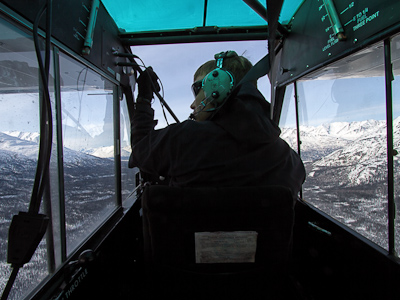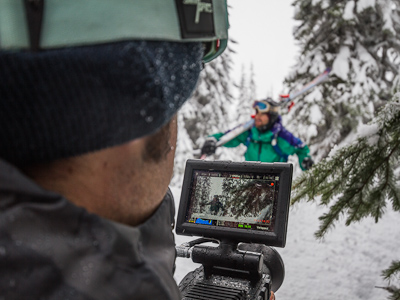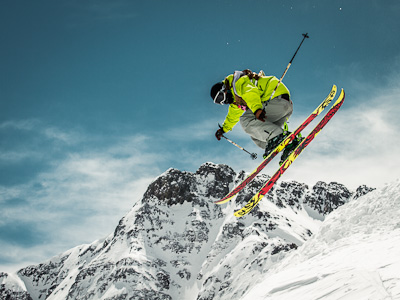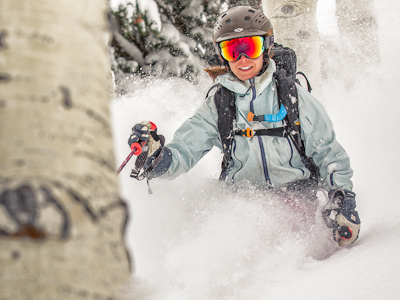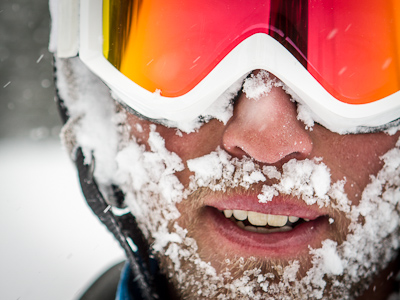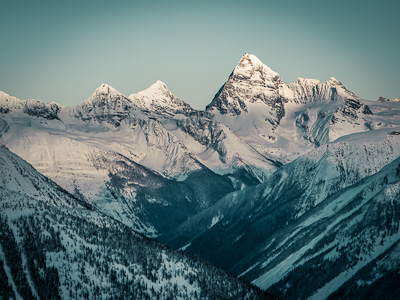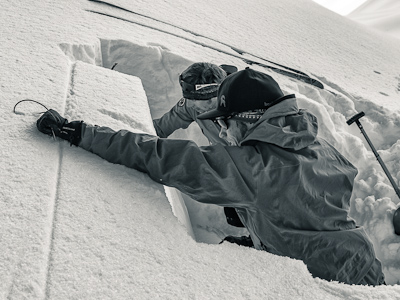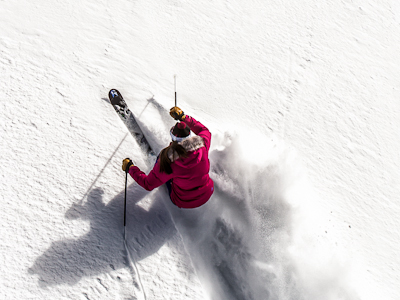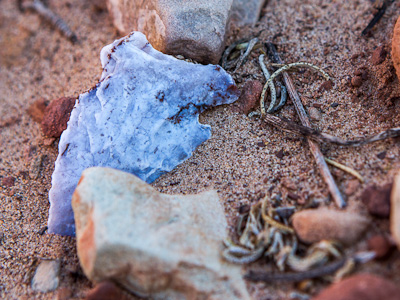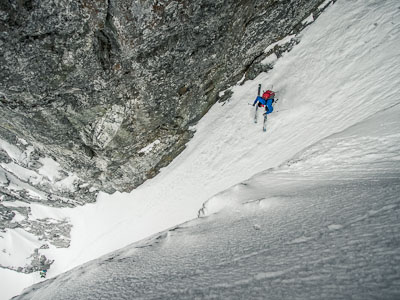North Face of Timp
The North Face of Mt Timpanogos is a steep, seldom-traveled place. Andrew McLean and Brad Barlage skied a direct line decade ago before descending a poorly protected series of rappels down the 600 foot cliffs that stripe the lower face. Since then, the line has seen little action. Derek and I had eyed an elegant sneak down a tucked-away couloir in the cliffs on prior ski tours, but the face above was just too intimidating to try it on a whim. The windloaded, hanging snowfield below the summit avalanches frequently, often sliding to the ground. Unlike some areas on Timp, the North Face snowpack trends towards shallow and sugary.
This spring, after making and then aborting plans to ski the line a few times, Derek, Tom and I headed back. Cloud cover kept the spring snow from softening but the firm snow made me confident that we need not worry about avalanches. The Ali Babba sneak couloir was filled in, which I’m not sure happens every year. There was no need for ropework where the beta photo is marked “Rap.” The line we skied was something I’d envisioned for a few years and so naturally it felt great to ski it in safe conditions.
Here’s Derek’s trip report.





